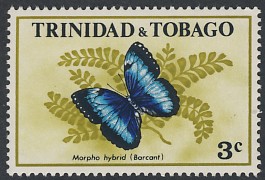One hundred and twenty three species of butterflies have been recorded in Trinidad and Tobago. According to President of the Trinidad and Tobago Wild Fowl Trust, Molly Gaskin. Butterflies are less prevalent than ever in many areas in Trinidad and Tobago and common local species like the bamboo page, yellow migrants, brown biscuit, painted lady and the black tomato are on the verge of extinction.
Usually butterflies emerge at the beginning of the rainy season from around May-September. “Butterflies are not plentiful as before, we are seeing a decline which really tells us that something is wrong,” Gaskin said. “Butterflies are important ecological indicators; if their numbers are falling, it means that our ecosystem will also be suffering. Insects like butterflies and dragonflies are the first indicators that something is wrong with the environment; if you have plenty of them you know that the environment is healthy, one reason for the dwindling insects is that we are cutting a lot of “bush” and are no longer planting specific plants which butterflies use to pollinate.” Gaskin explained that a butterfly is a pollinator, just like the honey bee and the humming bird — which are also under threat. Pollinators are vital as one-third of the food produced for human consumption is dependent on them. She went on to explain that in addition to these benefits, the insect serves as a food source for birds and other wildlife and increasing butterfly habitat would be beneficial to food production, the ecosystem and the species.
Source: Trinidad and Tobago's Newsday, 8 June 2011
http://www.newsday.co.tt/news/0,141939.html

- Log in to post comments
